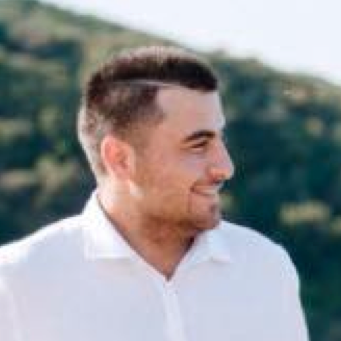-1.jpg)
One thing Aussies truly love is a bit of winter sports out on the field, and it’s this time of year that we begin to notice how much damage this can cause our sports oval turf. For a variety of reasons, the primary being that the goalmouth is the area with the most concentrated foot traffic, it’s no wonder the damage is usually first seen at the goalmouth.
Repairing Sports Field Goalmouths
It’s worth saying up front, repairing your sports or school oval doesn’t need to be expensive or leave your field unusable for excessive lengths of time. Here are some options that will depend on time, budget, and the condition of the area you’re repairing:
- Re-sprig the areas. Sprigging is establishing new turf from grass stolons and rhizomes. Sprigs are harvested from turf rolls cut at a shallow depth and chopped into 30-50mm lengths. Sprigs are then either planted in small furrows or spread onto the surface and either inserted into the soil with purpose-built tools, lightly power harrowed and rolled, or covered with a soil-based top-dressing with about 30% of the sprig remaining above the soil surface. Turf coverage from sprigs can be achieved in six to eight weeks, with the surface playable in 10 to 14 weeks. This solution offers a great outcome, however it's important to note that (1) successful sprig establishment is depends highly on the weather and how well the site is managed, especially during the first two weeks, and (2) it does take more time to establish and make a full recovery, which means more ‘out of action’ time for your field.
- Replace the bare goalmouth with new turf rolls. Rolls are available in large maxi rolls or small rolls, and, when you find a good supplier, washed before they're delivered to you.
- Replace the bare goalmouth with a quicker, instantly-playable surface (such as Bullseye Instant Lawn System) providing an already-established surface to be installed which can be immediately played on.
Reasons Sports Field Goalmouths Wear Out
Ever wondered why a sports field’s goalmouth is the first thing to show signs of damage?
- Wear - There’s higher wear in this area than on the rest of the field. The nature of the game means this area will see a higher and more concentrated rate of foot traffic.
- Soil conditions - Because of the increased traffic in this area, soil will become more compact and so put the turf under stress.
- Poor drainage - Poor drainage means excess water in your soil. This leads to turf roots becoming water-logged which causes problems such as plant disease and fungus and results in the turf dying.
- Turf Type - The wrong type of turf has been laid. Choose turf for an area isn’t just about cost and aesthetics. Turf varieties come with their own unique properties. Some turf varieties don’t handle heavy foot traffic well, some don’t handle shade, some need more water than others, some are self-repairing… all these properties matter. Ensuring you have the right turf variety on your field will help make the difference between minimal, self-repairing damage, and your field being out of action for weeks on end.
Best Turf Varieties for Sports Field Goalmouths
Let’s start at the top (literally). There are many different varieties of turf on the market to sift though. A lot are very similar to each other. A project to investigate and field-test potentially hundreds of shortlisted turf varieties would be a mammoth task that would take years and a lot of ongoing analysis.
Luckily, that’s exactly what Lawn Solutions Australia (LSA) has done for us. Here are the two top varieties we and LSA recommend for sports and school fields:
TifTuf Bermuda is relatively new to the Australian market (though it has been here all over Australia being tested for many years). It is a fantastic all-rounder grass, particularly great for:
- High wear areas (high wear tolerance);
- Shaded areas (requires less sun than many other varieties);
- Areas with low water supply (requires up to 38% less water than any other turf variety);
- Because it’s self-repairing (quickly rejuvenates itself due to its growth structure and rhizome root system); and
- Areas where winter colour aesthetics is important (it offers a good winter colour).
Aesthetically, TifTuf has a bright, unique colour. It is becoming a favourite grass for Australian sports fields and used in a number of schools, parks, council sports ovals, and more.
One of the most recent sports fields turfed using TifTuf is Campbelltown Sports Stadium where TifTuf was chosen to resurface the entire field.
Find out more about TifTuf:
2. Eureka Kikuyu.
Eureka Kikuyu is and has been a popular choice for school ovals and council parks for many years. It’s a great turf choice for:
- Limited budgets (it is supplied at a lower cost/m2);
- Areas with full sun (it won’t thrive with a lot of shade);
- Less-used sports fields (not more than 35 hours per week of wear and tear);
- Because it’s quick to repair.
Whats the difference between Eureka Kikuyu and Kikuyu? Check out LSA's case study when an inferior Kikuyu was installed:
3. Nullarbor Couch.
Nullarbor Couch is another popular choice for sports and school fields, great for:
- That finer-leaf grass look;
- Areas with full sun (it won’t thrive with a lot of shade);
- Medium-use sports fields (between 35 and 40 hours per week of wear and tear); and
- Because it’s quick to repair.
Nullarbor Couch is AusGap Standard, so you can be sure you’re getting the genuine, 100%-pure, weed-free product, with a 10 year product warranty.
Different Soil Types Found in Sports Fields
Once again, there are many different soil types and structures with different properties and specifications. They can be categorised into the following segments:
1. Sandy Loam Types - The ideal soil type is an organic, sandy loam soil. This allows for good drainage as well as organic elements holding the nutrients and enough moisture to keep the grass plant healthy, strong and active. You can easily achieve this soil type if your soil is sandy enough, without the need to bring in new soil.
2. Sandy Soil Types – Ideal for drainage, however, they don’t hold moisture and nutrients as well as other soil types.
3. Clay Soil Types – Usually not recommended as they don’t provide any drainage; the ground becomes very hard and the soil begins to struggle with the wear and tear. This soil will require more fertiliser to keep maintained.
Without the correct soil type for the area, you will find the lawn struggling, causing it to eventually fail. It is important that the playing surface has the correct soil type as a foundation for your lawn, as this allows the turf to perform at its best, using less water, fertiliser and weed controllers to keep the lawn looking lush and green.
Dangers of Artificial Grass
Synthetic turf in these areas seems to be an obvious choice, as no watering is required and it can withstand, wear and tear. Artificial turf has its place in the market but shouldn't be used sports fields. There are greater benefits in using natural turf for sporting fields such as the fact that it will remain cool during the summer months and provide a natural fire barrier. It will also provide oxygen that reduces pollution. It is self-replenishing and cost-effective and known to be naturally calming and self-sanitising. All of these benefits combined make natural turf a safe sporting surface.
For more information, take a look at Turf Australia press release and case study:
Get Your Complete Best Practices Guide to Returfing Sports Fields & School Ovals:
Summary
It is important that when considering to resurface a sports field, that you use and select the right materials and products that will be suitable for the longevity of the area. Soil conditions and preparation is crucial to the success of any type of lawn as it gives the lawn a solid foundation for it to thrive, making it more efficient and easier to maintain.
We are a family business who are passionate about all things turf and love to see more open green spaces within parks and schools. We aim to take the confusion out of turf industry by only growing varieties that have greater benefits to the environment. We have farms strategically located in the Hawkesbury and Hunter Region growing on sandy loam soil bases, which is the optimum foundation for any new lawn.
We can supply turf in small rolls, maxi rolls and now, new to the market, an all new patented system that will revolutionise the way turf is installed, Bullseye Instant Lawn System. Bullseye is a turf + soil paver. Bullseye can be grown with any turf type, and has a 75mm organic base of sandy loam soil, that can be placed in any area and instantly be played on without any establishment times. Bullseye can also be easily removed and replaced mid-season, without having to close the field, making it the perfect choice for goalmouths.
We also can contract grow any lawn variety for large-scale projects. Find our more here: Bullseye Instant Lawn System.







.jpg)













